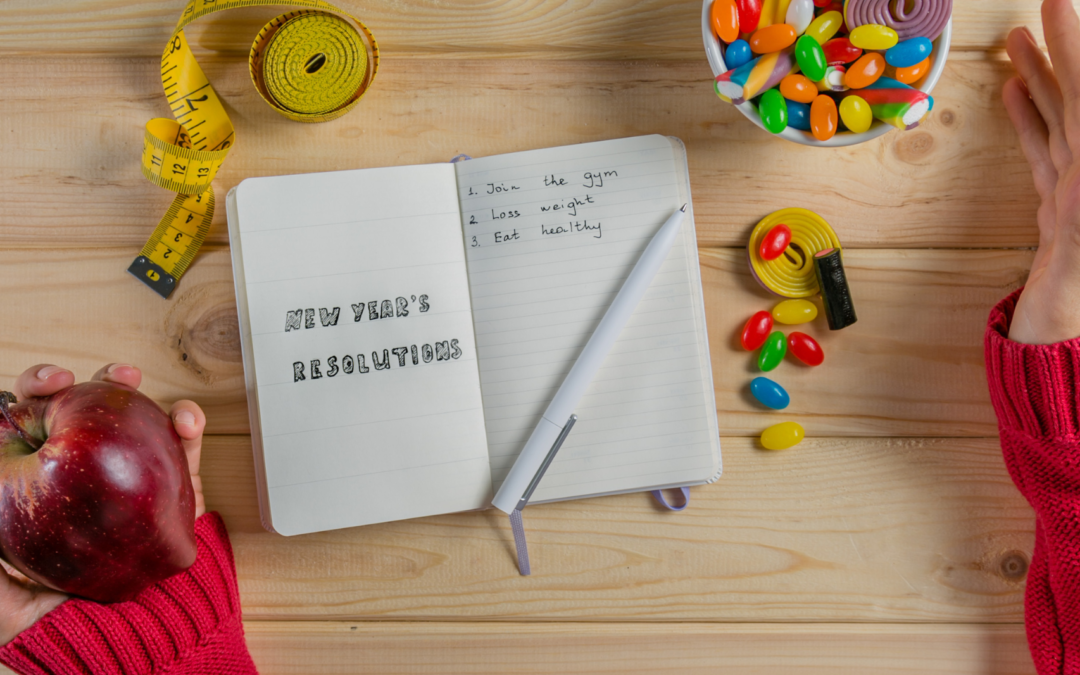New Year’s resolutions and goals are admirable when people make them, are driven by them, commit to them and achieve them. However, they don’t always pan out this way for everyone… If this resonates for you, it might be time to change your mindset and learn to live more intentionally instead of setting resolutions this year.
As an official ‘middle years’ person (over 50), I no longer set goals every January because they would be the same ones as the previous years. Why set New Year’s resolutions if I haven’t been able to achieve them thus far?
Do I therefore aim for nothing new? No. The opposite! My perspective has changed and I have instead shifted towards living intentionally. This mindset is simpler and more effective than the cycle of New Year’s resolutions that don’t work for me.
What Does ‘Living Intentionally’ Mean?
Living intentionally is where you seek to create the conditions for something to come to fruition. It’s about taking achievable actions to work towards your intentions for the next year – with no pressure. I will illustrate with my own two intentions for next year:
- To get better at tennis
- To consolidate and stabilise the position of my business
I am unclear how these intentions will be done, and in fact, I don’t have specific goals around either intention, although I do have the first steps to achieving them. So why no goals? Because both intentions are complex to achieve and I can’t see which goals will make the difference, and what is realistic in terms of achievements to aim for.
How Do You Change Your Mindset When Working Towards Complex Intentions?
For next year, my two intentions are both complex to achieve.
Intention 1: To get better at tennis
The complexity in my tennis comes from two or three main drivers. Firstly, when I played as a kid, I was great at some shots like baseline play, but not others like volleying, and that skill gap is still with me. The next driver is years of not playing tennis, meaning I am really under-practised. A significant wrist injury from a few years ago means I now have to re-learn all my shots so it’s not painful. My age and fitness levels play a part, and then there’s the little time I actually have for this great love in my life: once a week at best.
I am grateful to be able to play tennis – I love it – and I want to get better. To what level and to what aim doesn’t really matter. I start from where I am, and work towards something better, then review and keep going forward. So far I already have set up better fitness routines, alleviated some of my end-of-week mental fatigue, and have recently cut down on my alcohol intake. I am now going to work on some specific skills like the volleying that I know I am not confident about.
The journey of getting better is very motivating because the more I play better tennis, the more I enjoy it.
Intention 2: To consolidate and stabilise the position of my business
The business complexity is a more obvious one – a start up business with the unpredictability of the marketplace, the lack of capacity since we’re a small company, and the inevitable highs and lows of it all. The idea of smoothing the path is what I have in mind, nothing more. The conditions for this are being able to make headspace, being able to match our capacity with what we can actually achieve, and I’m sure many more. I haven’t set out to identify them all and set out goals or specific targets for any of these conditions. Instead, I will give space to leveraging every opportunity to smoothing the path.
I cannot set SMART goals for either of my intentions. I can’t see the wood from the trees enough – the paths are obscured in many ways, and will depend on where I get to after the first couple of steps. From experience, I know that many factors affect the ability to drive towards a specific goal within a complex task, meaning other goals are often missed and it could feel like a failure. I don’t want to go there.
Living Intentionally: How It Works In Practice
Although my intentions are complex, I can boil it all down to something simpler. I will choose to live and work to the intention of ‘making better’.
In practice, living intentionally will look like:
- Making your intentions active, every day
- Seeking opportunities that arise
- Aiming to see as far as you can down the line to help shape your decisions today
- Experimenting and learning along the way
- Making the effort, but taking time to rest properly too
- Being both independent and dependent
- Falling over… and then forgiving yourself!
The core attitude at the heart of living intentionally is to change your mindset from ‘what should I do’ to ‘what can I do’.
In my complex world, this is a resilient way of looking forward at the start of each year. And it’s oh-so motivating!
Author: Jenny Campbell Founder and CEO of the Resilience Dynamic
Follow Jenny on LinkedIn for more of her thoughts, resilience research, and ideas.
